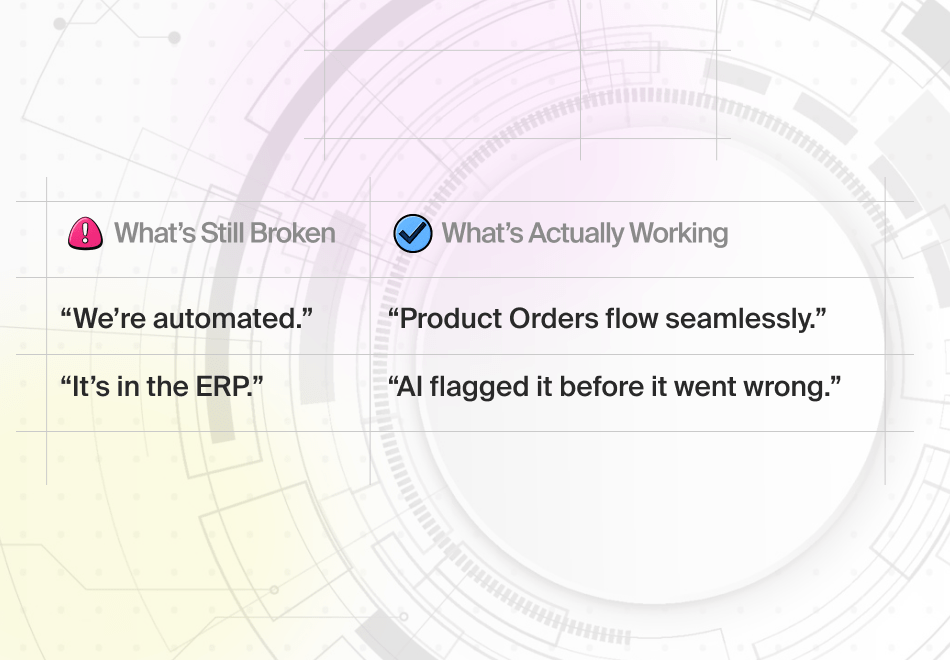Recap
In a previous post, we looked at the basics of the high-level steps involved in adding Microsoft Dynamics 365. In this post, we will take a look at common implementation problems and ways to avoid them or reduce their effect.
It’s time for a change. Your company decides to modernize with Microsoft System Dynamics 365 Finance to automate and modernize your financial operations.
Now you need to make it work for you.
Four Challenges
The four main challenges that can impact an ERP implementation project’s budget and timeline are:
- 1.Applying experience with other enterprise resource planning (ERP) systems, expecting Dynamics 365 to behave the same way. It will not.
- 2.Users may expect certain functions built into D365 because of the previous ERP. These functions may have been customized to get where they are. Attempting to add them can keep the project from achieving its objectives and add constraints.
- 3.Wish lists items can also cause the implementation cost to go out of control. A Change Champion can reign in these wish lists to ensure the right amount of focus is placed to achieve the best possible result.
- 4.Using inaccurate information from other companies’ installations researching a different D365 module.
Being aware of these issues from the beginning will help avoid a failed ERP implementation.
Figure: 1Main Pitfalls affecting a project’s scope, budget and timeline
Common Problems and Causes
These are a few of the most common D365 implementation problems and their likely causes, each of which can frustrate executives and employees.
| Problem | Example | Possible Cause |
|---|---|---|
| A tool or important feature was left out | Payment terms are missing | A scenario was misspelled or overlooked in the Design Phase |
| Legacy data upload is incomplete or corrupted | Names are misspelled, dates are wrong, amounts are inaccurate, etc. | Data was not input properly into the legacy system |
| A specific configuration is incomplete or not working properly | Departments are not being notified when payments are made | Lack of communication between staff and implementation team |
The most likely cause for the majority of these issues is communication. For example, the implementation team did not clearly understand what was being asked, or different people requested changes to the same section.
A good way to resolve communication problems is by having the Change Champion review and approve the updates during the design phase. Customization best practices means having the Change Champion approve or deny all change orders and requests.
When data is not properly entered into the system, the business will need to search its records and recreate the missing material.
Other Common Implementation Problems
One of the most common reporting issues deals with those at the end of a month. For example, Inventory shows 10 barrels at $10 each were used. However, Finance shows 9.2 barrels were used, resulting in a dollar discrepancy.
This is the kind of issue best brought up during user access testing (UAT) when the implementation team can define cell properties. That way, inventory and finance agree.
D365’s Finance module has detailed reporting options. The ability to input data depends on a person’s security roles, privileges and duties. For example, someone who wants to “Generate financial reports” must have that role, privilege and duty assigned to them.
When a user needs to generate a report and can’t do it, they should talk to the system administrator or security administrator, Microsoft states.
Reports used data input into the system. When data is not being accurately added, reports will reflect the inaccuracies.
An excellent way to resolve these issues is by involving the training team early and often. Have them create training materials and then have users perform the tasks in the UAT environment to ensure everything works as designed.
Following Methodology
D365 implementations follow a strict methodology. Problems occur when executives or employees try to get around the system. Seeking an easier path by using a method from the legacy system usually causes problems with D365.
Dynamics 365 is set up logically – Form follows function, step follows step. Trying to go from Step 2 to Step 6 without performing the intermediate actions is a recipe for trouble.
Microsoft has its own “Sure Step Methodology” as part of its ecosystem. This methodology:
- Is designed specifically for Microsoft implementations
- Defines key activities and deliverables
- Provides tools and templates
Focusing on the ‘To Be’
Change, no matter how beneficial, is always stressful. Many people are comfortable performing tasks a certain way. They are uncomfortable doing it differently.
When employees focus on the “As Is,” which is how tasks were done with the legacy system, they get bogged down and have trouble adapting to D365. Instead, they need to consider the “To Be,” which is the end goal.
For example, Inventory uses one legacy system and Finance uses something different. Some fields are identical but others are different. In D365, both departments must change how and where they input data.
By focusing on the “To Be,” the end result of implementing D365 is a leaner, more accurate and more profitable business that benefits both departments.
Here’s an example of “To Be.”
- 1.Intelligent financial information using data from multiple sources permits intelligent operations.
- 2.Intelligent operations lead to improved productivity.
- 3.Improved productivity leads to faster fulfillment, which leads to timely delivery.
- 4.All of these steps lead to increased profitability, which funds improvements in everything else.
The Value of Microsoft Dynamics
One way to implement change management is by explaining some of the values inherent in Microsoft Dynamics.
These values include:
- Empowering employees, giving them real-time access to actionable data
- Driving faster innovation
- Facilitating smarter decisions with user-based workspaces
- Delivering real-time responses to customer demands
- Reducing transportation costs and increasing delivery accuracy
- Scaling up or down as the business changes
- Using mobile phones, tablets and other devices that let employees perform more tasks where they work
Summary
Implementing Microsoft Dynamics 365 is often looked at as complicated, or fraught with problems – but only if you let it. Taking a forward thinking approach focusing on your “To Be” goals helps the implementation move forward faster.
Companies that navigate smoote implementations often start training almost from Day One. Training employees early gets their buy-in and lets people learn how D365 can make their work lives easier.
Having a Change Champion helps keep the implementation on time and on budget.
Anticipating problems before they occur allows managers to head them off. Change will occur. Instead of resisting, workers are better off spending that energy on learning how to maximize their value.
The overall result will make your company more efficient, more agile and more profitable.
Get More Done
Improve your chemical, pharmaceutical or life science business by updating your ERP to Microsoft Dynamics today. Visit www.xcelpros.com (a Microsoft Gold Partner) or call 1-855-411-0585 to learn more.









